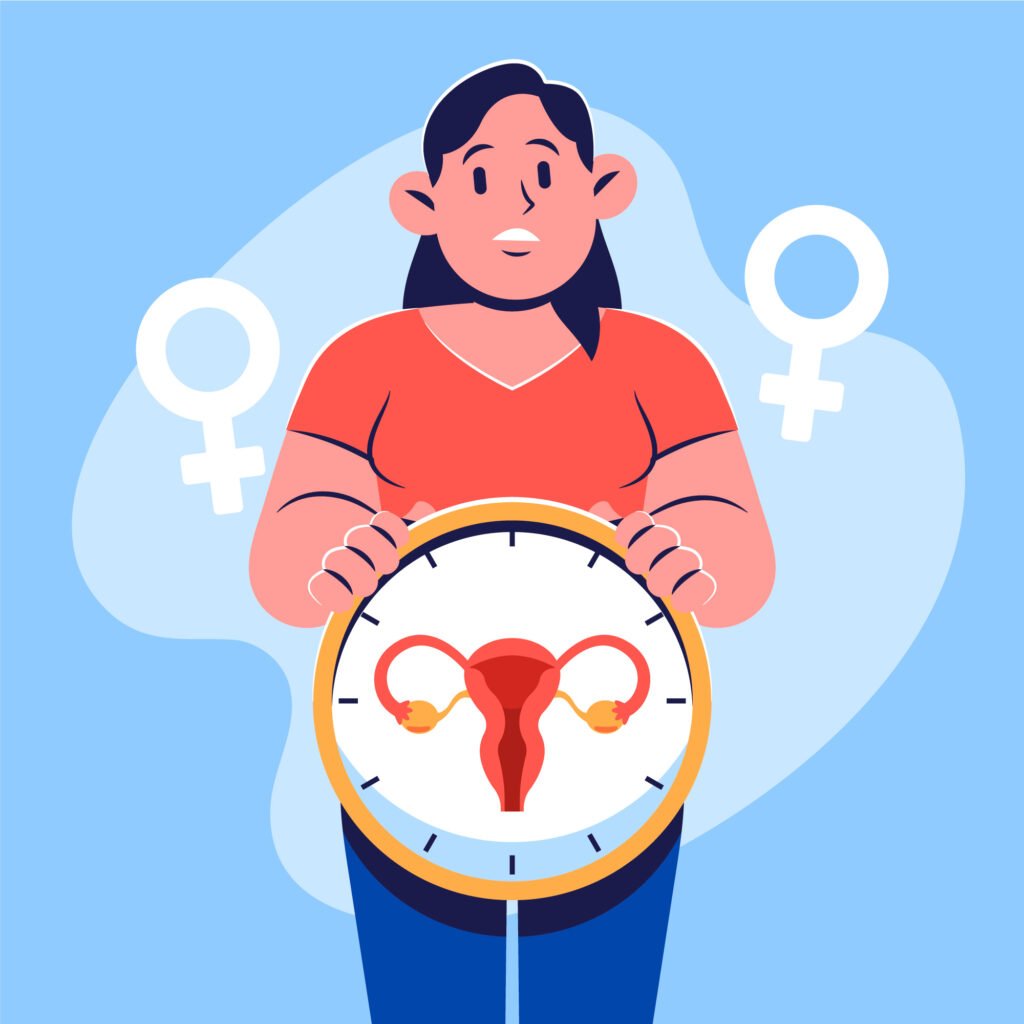Amenorrhea: How The Absence of Menstruation Can Be a Problem
Gabriela Castro
May 2024
If you have a uterus, there’s a chance your period has not always come on a regular monthly basis. The chronic absence of a period can be indicative of a medical condition called amenorrhea. There are two types of amenorrhea–primary and secondary.[4] Primary amenorrhea refers to those with uteruses who have not had their first period (also known as “menarche”) by age 15.[3] Secondary amenorrhea is the absence of 3 or more consecutive periods by someone who has begun to menstruate previously.[3]

Symptoms
The central feature of amenorrhea is a lack of menstruation. Other symptoms associated with amenorrhea can vary in part due to its causes, including::
- Milky nipple discharge[3]
- Hair loss[3]
- Headache[3]
- Vision changes[3]
- Excess facial hair[3]
- Pelvic pain[3]
- Acne[3]
Primary Amenorrhea Causes
- Primary amenorrhea is caused primarily by hormonal imbalances and genetic abnormalities.[5]
- Having hypothalamic issues can prevent the onset of menstruation.[5]
- Issues with the pituitary gland such as pituitary tumors can inhibit menstruation.[5]
- Low body weight, excessive exercise, and eating disorders can cause stress which affects hormone production (particularly in the pituitary gland or hypothalamus leading to amenorrhea).[3]
- Genetic abnormalities such as a lack of reproductive organs or a structural abnormality obstructing the vagina can block visible bleeding.[3] Chromosomal issues such as Turner syndrome–which is caused by a missing or partly missing X chromosome–or genetic disorders like androgen insensitivity syndrome–often characterized by high testosterone levels–may affect menstruation.[5]
Secondary Amenorrhea Causes
Secondary amenorrhea has a wider variety of causes.
- It can be brought on naturally through pregnancy, breastfeeding, or menopause.[5] This type of amenorrhea can be brought on by hormone imbalance in ways similar to primary amenorrhea.
- Hypothalamic amenorrhea–associated with low body weight, body fat, high stress, extreme exercise–can result in secondary amenorrhea.[5] Other hormonal imbalances that result in amenorrhea can be overactive or underactive thyroid, or pituitary tumors.[5][3]
- Gynecological issues such as polycystic ovarian syndrome (PCOS) as well as premature menopause (which is associated with fragile X-associated primary ovarian insufficiency (FXPOI)) are tied to amenorrhea. [5][3][4]
- Uterine scarring as a result of various medical interventions (including dilation and curettage (D&C), cesarean section, or treatment for uterine fibroids) may cause amenorrhea.[5][3]
- Medications such as contraceptives, antipsychotics, antidepressants, blood pressure medications, chemotherapy radiation, and allergy medications are also known to cause secondary amenorrhea.[5][3]
Prevalence
With the wide array of underlying causes, you might be wondering, how common is amenhorrea? When focusing on women who menstruate, the American College of Obstetricians and Gynecologists estimated that 1 in 25 women who are not pregnant, breastfeeding, or going through menopause experience amenorrhea at some point in their lives.[1] If you struggle with amenorrhea, you should know you are not alone.
Treatments
If you or someone you know is struggling with amenorrhea, it can be a sign of a deeper issue especially if it is not because of natural causes like pregnancy or menopause. That is why it is important to discuss your menstrual cycle with your healthcare provider, including any other symptoms you’ve been experiencing. Depending on the root cause of amenorrhea, treatment can vary from psychological therapy, stress management, eating disorder treatment, changing medications, surgery, chemotherapy, or radiation.[2] Whatever the cause is, you do not have to endure amenorrhea without help or guidance. Taking the first step by sharing your concern with your health care provider and a trusted loved one will ensure you are in good hands and supported in your recovery.
References
[1] Amenorrhea: Absence of periods. (2020, October). https://www.acog.org/womens-health/faqs/amenorrhea-absence-of-periods
[2] Amenorrhea—Diagnosis & treatment. (2023, February 9). Mayo Clinic. https://www.mayoclinic.org/diseases-conditions/amenorrhea/diagnosis-treatment/drc-20369304
[3] Amenorrhea—Symptoms and causes. (2023, February 9). Mayo Clinic. https://www.mayoclinic.org/diseases-conditions/amenorrhea/symptoms-causes/syc-20369299
[4] Fragile x-associated primary ovarian insufficiency (Fxpoi) | nichd—Eunice kennedy shriver national institute of child health and human development. (2021, August 19). https://www.nichd.nih.gov/health/topics/fxpoi
[5] What causes amenorrhea? | nichd – eunice kennedy shriver national institute of child health and human development. (2017, January 31). https://www.nichd.nih.gov/health/topics/amenorrhea/conditioninfo/causes





